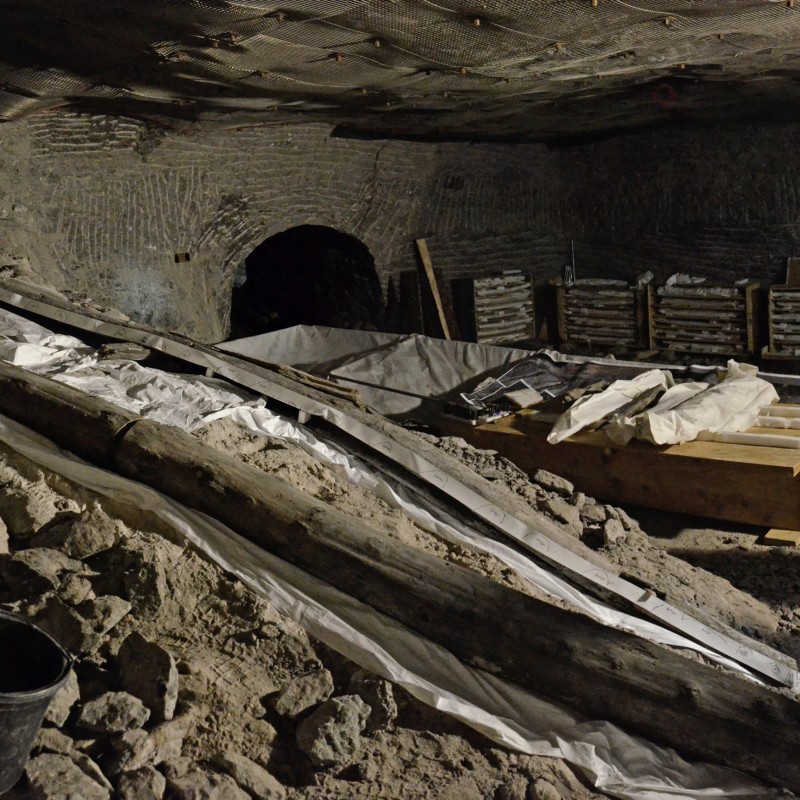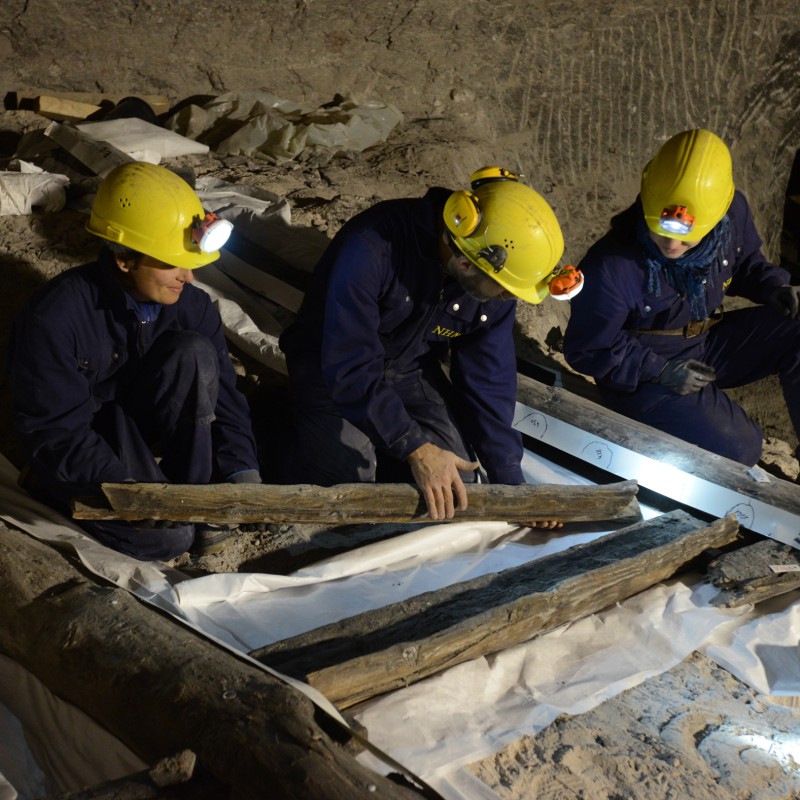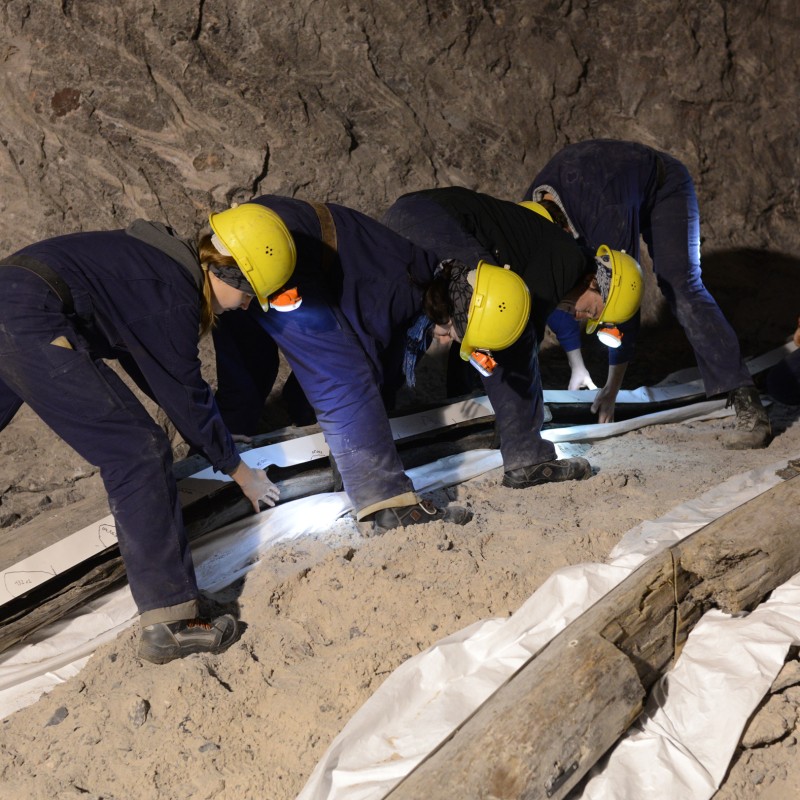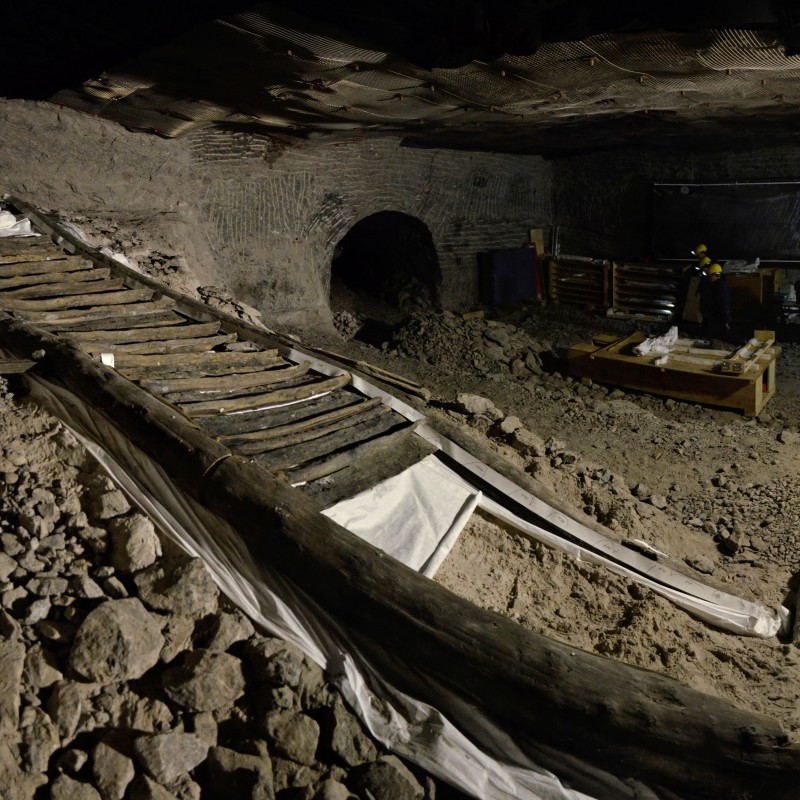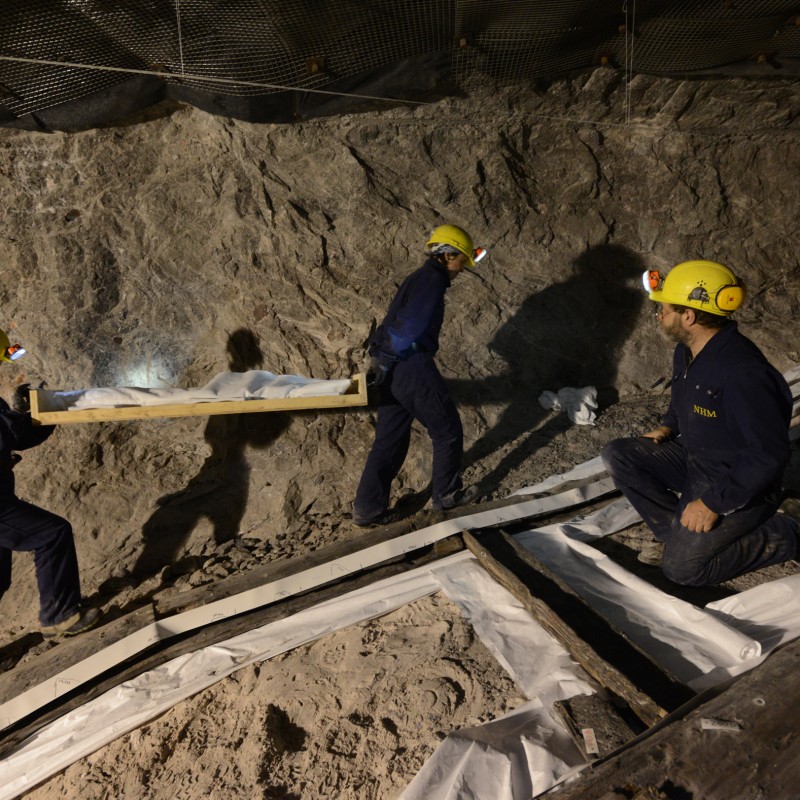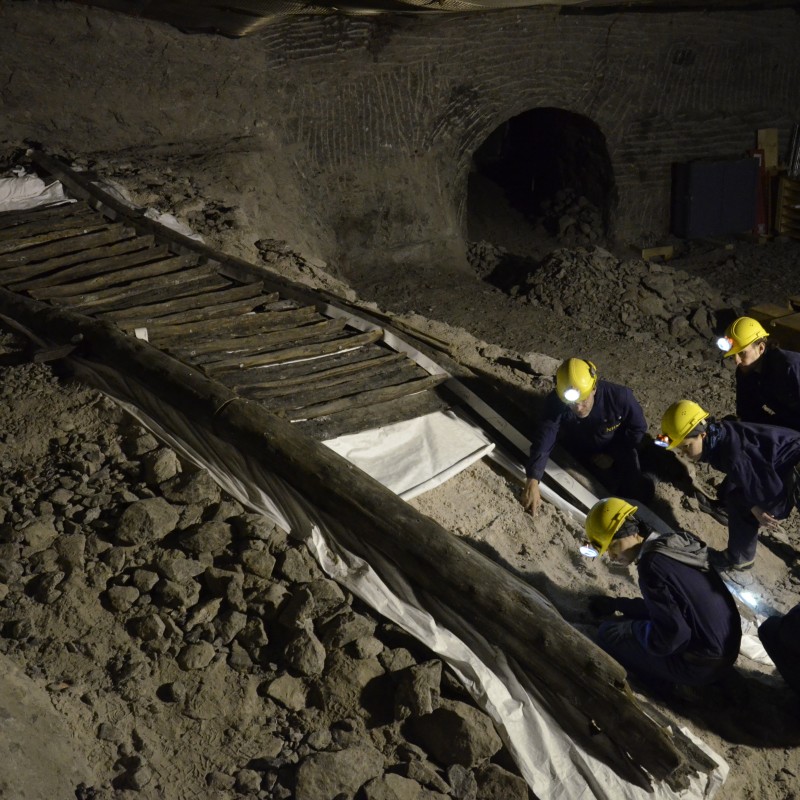Large “display case” for Europe’s oldest wooden staircase from the Hallstatt salt mines
18. February 2015
The NHM Vienna and Salzwelten / Salinen Austria have joined forces to create a huge new “display case” for the oldest wooden
staircase ever found in Europe, located in the salt mines of Hallstatt in Upper Austria, set to open in May 2015.
The
NHM Vienna and Salzwelten / Salinen Austria have joined forces to create a huge new “display case” for the oldest wooden staircase
ever found in Europe, located in the salt mines of Hallstatt in Upper Austria, set to open in May 2015.
Discovered in the prehistoric section of the Hallstatt salt mines in 2002, the oldest staircase in Europe was the subject of intense research for many years before it had to be moved from its original location to a new public display area currently under development in the world’s oldest salt mine.
When it opens in May 2015, the huge “display case”, located 400 meters below ground, will give visitors a chance to view the 3000-year-old staircase that measures over eight meters in length and has survived in its entirety. Conditions in the salt mines are ideal for preserving this sensational find in the years to come.
The more than 70 sections which together make up the staircase are currently being bedded into fine salt dust and placed in their original positions.
Before reconstructing the staircase, each section was passed through a 3D scanner and documented in detail. The next step was to dry the pieces of wood at the Institute of Wood Technology and Renewable Materials at the University of Natural Resources and Life Sciences in Vienna. Before being returned to Hallstatt, the sections were examined once again at the Austrian Foundry Research Institute using CT scanning technology.
These complex and time-consuming analyses, together with the work of NHM researchers on-site in the mines, will form the basis for a 3D visualization of mining in Hallstatt during the Bronze Age. This show will depict the highly efficient and specialized work carried out over 3000 years ago in an entertaining and informative way by creating a story about a Bronze Age boy named Udlo from Hallstatt. Visitors to the new display area will experience a typical day in the mines during the Bronze Age. For the first time a 4K film (better resolution than Full HD) will be projected directly onto an archaeological find. This concept, which was created by the exhibition designers Scenomedia from Salzburg, will combine ancient history and state-of-the-art technology to present the research results in an eye-catching and memorable way.
Once reconstruction of the staircase has been completed, the final touches will be made to the display case and the visitors’ area. An airtight division will then be added between the staircase and the visitors’ area, climate control devices will be installed in the display case, seating galleries will be installed, and the complex equipment required for the 3D visualizations will be mounted and fine-tuned.
From 29 May 2015 the staircase will form the centerpiece and highlight of the new “Bronze Age cinema” 400 meters underground.
For daily updates on work visit the blog at http://hallstatt-forschung.blogspot.co.at/
Discovered in the prehistoric section of the Hallstatt salt mines in 2002, the oldest staircase in Europe was the subject of intense research for many years before it had to be moved from its original location to a new public display area currently under development in the world’s oldest salt mine.
When it opens in May 2015, the huge “display case”, located 400 meters below ground, will give visitors a chance to view the 3000-year-old staircase that measures over eight meters in length and has survived in its entirety. Conditions in the salt mines are ideal for preserving this sensational find in the years to come.
The more than 70 sections which together make up the staircase are currently being bedded into fine salt dust and placed in their original positions.
Before reconstructing the staircase, each section was passed through a 3D scanner and documented in detail. The next step was to dry the pieces of wood at the Institute of Wood Technology and Renewable Materials at the University of Natural Resources and Life Sciences in Vienna. Before being returned to Hallstatt, the sections were examined once again at the Austrian Foundry Research Institute using CT scanning technology.
These complex and time-consuming analyses, together with the work of NHM researchers on-site in the mines, will form the basis for a 3D visualization of mining in Hallstatt during the Bronze Age. This show will depict the highly efficient and specialized work carried out over 3000 years ago in an entertaining and informative way by creating a story about a Bronze Age boy named Udlo from Hallstatt. Visitors to the new display area will experience a typical day in the mines during the Bronze Age. For the first time a 4K film (better resolution than Full HD) will be projected directly onto an archaeological find. This concept, which was created by the exhibition designers Scenomedia from Salzburg, will combine ancient history and state-of-the-art technology to present the research results in an eye-catching and memorable way.
Once reconstruction of the staircase has been completed, the final touches will be made to the display case and the visitors’ area. An airtight division will then be added between the staircase and the visitors’ area, climate control devices will be installed in the display case, seating galleries will be installed, and the complex equipment required for the 3D visualizations will be mounted and fine-tuned.
From 29 May 2015 the staircase will form the centerpiece and highlight of the new “Bronze Age cinema” 400 meters underground.
For daily updates on work visit the blog at http://hallstatt-forschung.blogspot.co.at/

